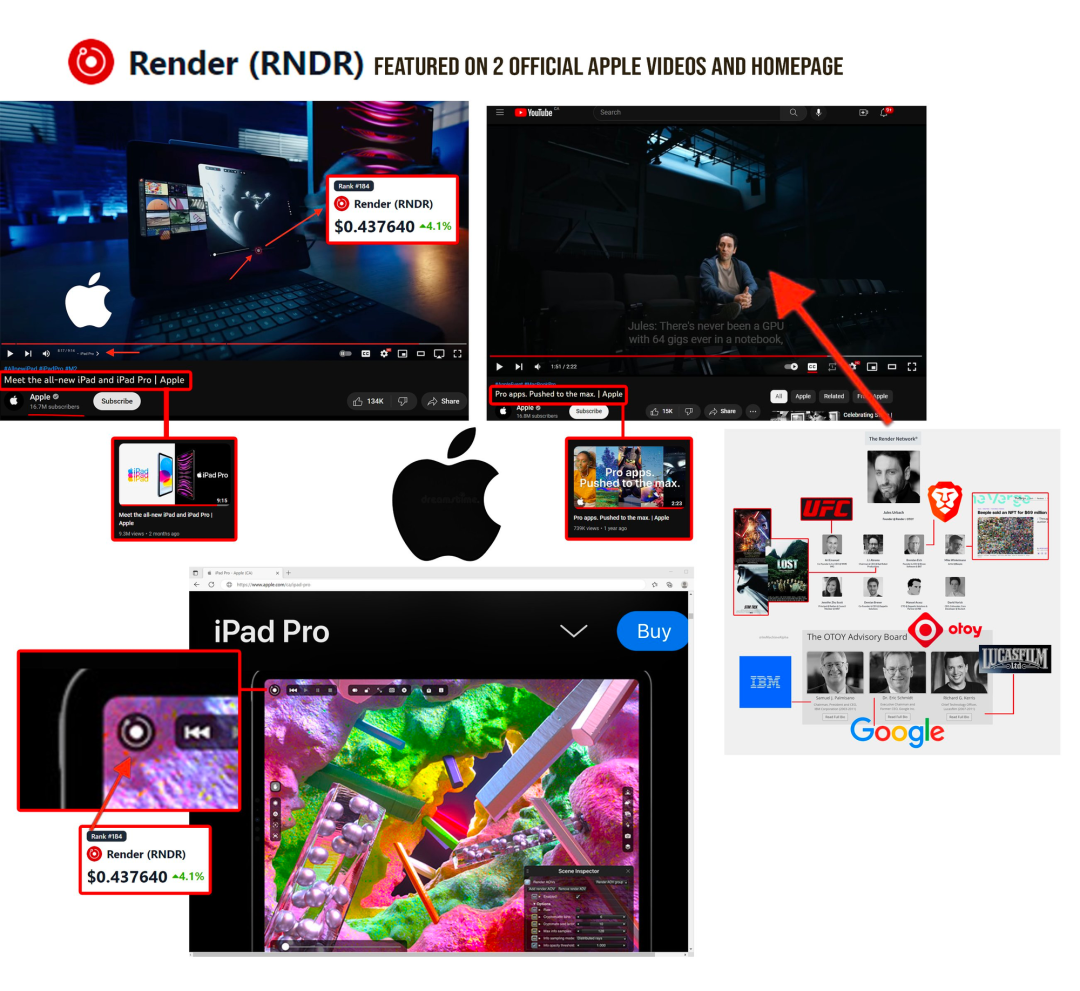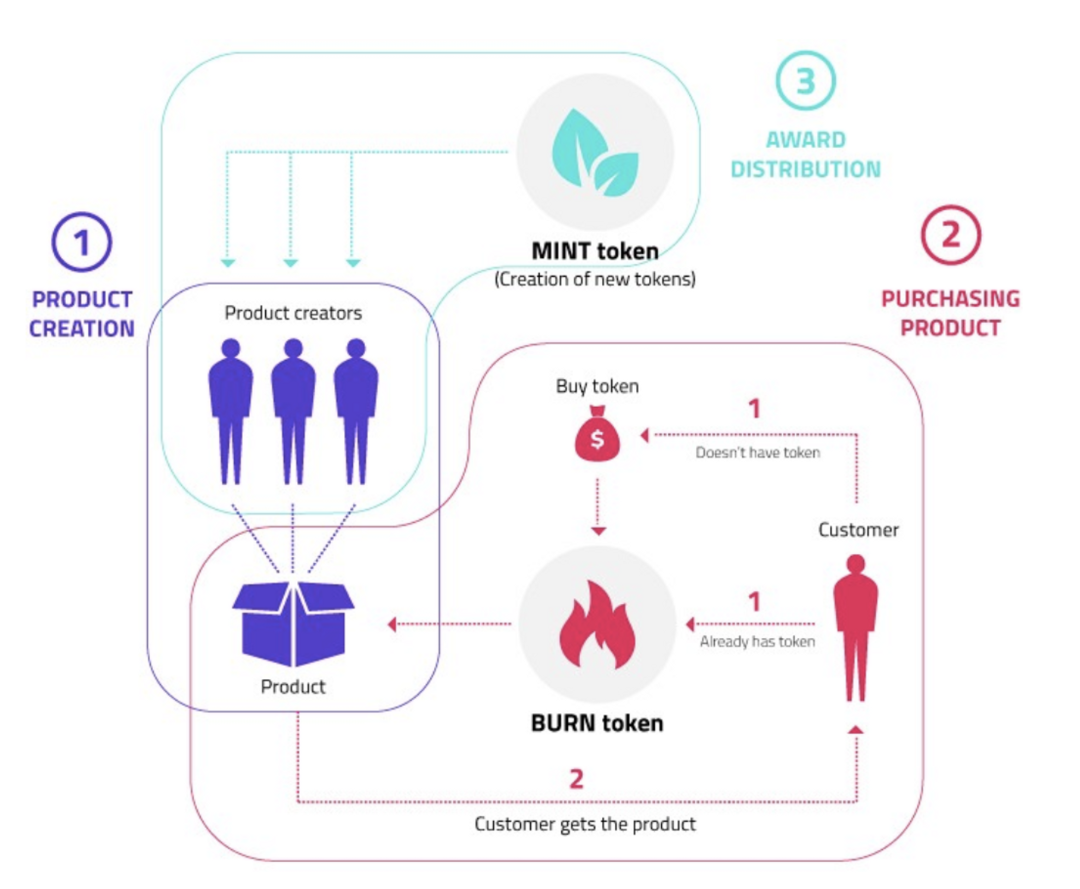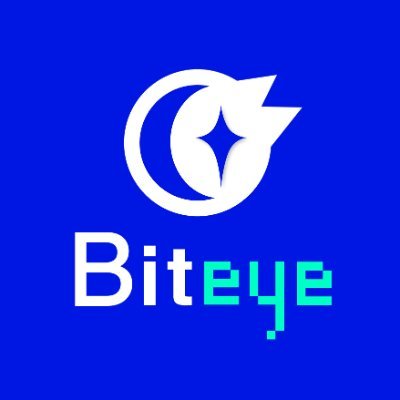Original editor: Biteye core contributor Crush
Original editor: Biteye core contributor Crush
Original source: "Biteye" community (@BiteyeCN)
Today, Apple announced the much-anticipated Vision Pro headset, a news that no doubt got tech enthusiasts excited. With the launch of this head-mounted display, VR technology will officially enter a wider audience's field of vision, bringing us a more exciting and realistic virtual reality experience.
But to achieve this realistic scene, it is inseparable from the rendering support of the hardware infrastructure. Whether in the VR world, or in the presentation of various 4K video and movie special effects, GPU computing power rendering has become the basis for realizing various realistic images.
With the rapid development of AI technology, the demand for higher-quality picture and video rendering is also increasing, so computing hardware facilities will become more and more critical.
first level title
01 background
Rendering (also known as image compositing) is the technique of turning a two-dimensional or three-dimensional computer model into a realistic image or scene.
Rendering appears in the background of so much of our technological life, as our smartphones and computers are constantly rendering images, videos and games. Rendering can be as simple as a scene in a 2D cartoon, or as complex as an action scene in the Transformers movie.
With the rapid development of technology, from the era of "Ratatouille" ten years ago, each frame of animation required 6.5 hours of rendering to today's real-time rendering of realistic scenes on tens of thousands of parallel GPUs in the cloud. rendering.
The rendering process consumes a lot of GPU computing power. Depending on the level of sophistication and complexity of production, the computing power required for rendering is different.
If it is a personally produced video, basically a personal computer can be used to complete the rendering. If it is a 4K high-resolution multi-channel video, a GPU graphics workstation may be required for rendering.
If it is a large movie special effect, using a workstation to render will take a lot of time, so you need to use a service like a render farm.
According to the QYResearch research report, the global rendering and simulation software market will reach USD 30.942 billion in 2025. Especially with the advent of the AI boom, more "Text-to-image" tools are emerging, such as Midjourney, Stable Diffusion and DALL-E, and more companies have begun to make efforts in the field of augmented reality technology. Rendering, or GPU computing power, puts more demands on it.
In 2009, Jules Urbach founded OTOY, a cloud computing company. OTOY's OctaneRender rendering software is a pioneer in the field of GPU rendering. It allows creators to create Hollywood-style works at home. It has become the leader of the rendering track in 2016. The current market cap is billions of dollars and the company is profitable.
Although OctaneRender solves the problem of rendering speed, traditional rendering is performed locally. If the creator is doing a large-scale creation at home, rendering often takes days, weeks or even months, so other work cannot be done simultaneously, which will greatly reduce the number of creations of the creator. On this basis, cloud rendering became popular, which uses remote rendering servers to distribute rendering workload among multiple computers in the network.
As Ethereum and GPU mining matured, OTOY saw an opportunity to leverage cryptocurrency mining GPUs to render a new generation of media content.
In 2017, Render Network, a blockchain-based distributed GPU rendering network platform under OTOY, was launched, aiming to connect more creators with idle GPUs, so that rendering is no longer limited to hardware conditions.
Compared with centralized cloud rendering, RNDR is an unlimited decentralized network, which solves the problem of supply and demand, breaks the limitation of centralized storage, gathers spare GPUs, connects creators who need additional GPU computing power, and maximizes resource utilization .
team
team
The initiator of RNDR is OTOY founder and CEO Jules Urbach. Jules is himself a pioneer and leader in computer graphics, streaming and 3D rendering, with over 25 years of deep experience in the field.
RNDR's advisory team also includes Ari Emanuel, co-founder and co-CEO of WME IMG, a well-known Hollywood brokerage company, chairman and CEO of Bad Robot Films, JJ Abrams, director of "Odaily Wars", and founder and CEO of Brave Software and BAT, Java Script Inventor Brendan Eich and other big names.
secondary title
market pain points
Render network summarizes four current market pain points:
1. Network scalability
It is very difficult to expand GPU rendering capabilities by means of local rendering and cloud rendering. These methods cannot effectively utilize the computing power of GPUs around the world, nor can they track rendering tasks.
2. Idle computing power
Many GPU devices are in an idle state when they are not working. In fact, this part of the idle GPU computing power can be effectively utilized. For example, someone has a workstation with a powerful GPU computing power. When not making videos, this is actually wasted computing power.
3. GPU Computing Application
Now GPU computing power is mostly used for POW calculations, which is actually meaningless and inefficient, and should be used for rendering.
4. Digital ownership
solution
solution
first level title
02 Protocol Architecture
secondary title
creator
Creators include graphic artists, mechanical engineers, architects, and others who work with digital vision, that is, the demand side of rendering.
To become a creator, you need a subscription to OctaneRender, which costs 19.99 EUR/month for an annual subscription and 23.95 EUR/month for a monthly subscription.
This subscription provides access to OctaneRender standalone software and DCC plugins for various programs such as AutoCAD, Unreal Engine, Adobe After Effects and more.
secondary title
node runner
Users with qualified GPU hardware can apply to become a node operator, use the idle time of the machine to earn some RNDR, fill out the form on the official website, and wait for the official to contact you.
Hardware requirements for node runners include: having a CUDA-capable NVIDIA GPU with at least 6 GB of VRAM, 32 GB of memory, a stable and reliable internet, and 100 GB of free disk space. Node runners will be assigned rendering tasks and will be rewarded with RNDR tokens upon completion.
secondary title
https://www.rendercalculator.com
pricing
image description
https://know.rendertoken.com/basics/how-much-does-rndr-cost
1 RNDR token or 1 RNDR credit corresponds to 1 OctaneBench work unit. OctaneBench is a tool created by OTOY to define the computing power provided by any combination of graphics cards as a score.
http://octanebench.com/
1 RNDR credit is equivalent to 100 OBs per hour at Tier 2 and 200 OBs per hour at Tier 3.
That is, 100 RNDR tokens can provide 2,500 OBh to 20,000 OBh. From a hardware perspective, 100 RNDRs give 1 RTX 2070 50-100 hours, or 10 RTX 2070s 5-10 hours.
image description
*Source: Render knowledgebase https://medium.com/render-token/rndr-tokenomics-update-multi-tier-pricing-mtp-338 d5 dea 1 d 29
simply put
- The first level is directly connected to large-scale enterprise-level rendering equipment, which is the best, fastest and most expensive;
- The second level is some idle enterprise equipment or miner equipment, which is easy to use and not expensive;
- The third level is some PCs with better configuration and the cheapest price.
secondary title
Payment
Users can purchase RNDR credits with Paypal or Stripe, and the cost of rendering jobs depends on GPU supply and demand. To get an accurate cost estimate, users can render a frame on their system and measure the time.
Cost estimates are then provided based on how intensive the workload is, determined by the user system's OB score, the time it takes the user system to render a frame, and the number of frames selected. 0.5-5% of the total RNDR required to work in transaction fees goes towards overlay network costs.
When users purchase RNDR credits, these credits are backed by RNDR tokens purchased by the project team from exchanges. That is, while creators are paid for work with RNDR credits, node runners will still be paid in RNDR tokens.
If a frame fails to render, it will be sent to another node. If multiple re-renders fail, the job will be quarantined and ticketed separately.
Payments are made on the Polygon network. Render Network does not use a bidding system to assign work, instead relying on tiers, reputation scores and availability. The reputation score is determined by a"render proof"system, which uses human and algorithmic verification to ensure quality. this prevents"bad guy"first level title
03 Market performance
image description
*Source: Render Blog https://medium.com/render-token/rndr-tokenomics-update-multi-tier-pricing-mtp-338 d5 dea 1 d 29
According to the latest data disclosed by the Render network, the total number of rendered frames in the first quarter of 2023 will be 2,119,813 frames, an increase of 2% compared to the fourth quarter of 2022, maintaining a steady upward trend.
https://medium.com/render-token/q4-2022-q1-2023-metrics-update-monday-may-1 st-2023-btn-d 89 acb 2 eb 2 f 6
And it can be seen that since March, there has been a significant increase in workload. In March alone, 840,804 frames of rendering were completed, and 235,955 RNDRs were issued as reward tokens.
image description
*Source: Render Blog https://medium.com/render-token/q4-2022-q1-2023-metrics-update-monday-may-1 st-2023-btn-d 89 acb 2 eb 2 f 6
*Source: Render Blog https://medium.com/render-token/q4-2022-q1-2023-metrics-update-monday-may-1 st-2023-btn-d 89 acb 2 eb 2 f 6
image description
Source: Dune https://dune.com/lviswang/render-network-dollarrndr-mterics
There are three possible reasons for the outbreak:
1. The holographic imaging technology of LightField Labs invested by OTOY, the parent company of the Render network, is developing rapidly in February this year, and the digital restoration process requires rendering work;
https://www.lightfieldlab.com
2. Recently established a cooperative relationship with Stable Diffusion, large language model generates images, and text-to-video/3D scenes can all be supported by the Render network;
3. The cooperative relationship between the parent company OTOY and Apple, Apple's official promotional video has repeatedly appeared the Render network logo. Octane X supports Macs and iPads with M 1 M 2 chips, and it is possible that render will become a built-in rendering component of Apple software.
https://twitter.com/Machine4lpha/status/1589723282453909504
image description

https://twitter.com/Machine4lpha/status/1589723282453909504
first level title
Source: Dune https://dune.com/lviswang/render-network-dollarrndr-mterics
04 Token Economics
RNDR is one of the earliest ERC 20 standard tokens deployed on Ethereum, with an initial total of 536,870,912 tokens. Tokens have undergone a 1: 1 migration of new and old tokens with contract upgrades.
Token distribution
Token distribution
- 25% for sale fundraising
- 10% allocated to team and consulting
secondary title
token sale
secondary title
Token buyback
secondary title
BME model (Burn-and-Mint Equilibrium Model)
The BME model describes the relative balance between burned tokens and minted tokens in an ideal process and a specific consumer market. It is already a mature token model and is used in projects such as Helium.
Currently, RNDR credit and RNDR tokens can be used for settlement on the consumer side of the Render network. Using 1 RNDR and 1 credit has the same computing power purchasing power, and the price of 1 credit is fixed at 1 euro, while the current value of 1 RNDR is much higher than 1 euro. Therefore, although the credit income will be used to purchase RNDR tokens on the exchange, it will be very uneconomical to pay with RNDR when consuming, resulting in weakened token value capture.
In September 2022, RNP-001 proposed to change the token model to BME model, which will greatly improve token circulation and supply-demand balance. In this model, users use RNDR tokens when purchasing GPU rendering services, and the tokens used will be destroyed after the task is completed, and the service provider’s rewards will be issued using newly issued tokens. The basis for the rewards is not only based on the task Completion indicators also include other comprehensive factors such as customer satisfaction.
secondary title

*Source:Renderbloghttps://medium.com/render-token/behind-the-network-btn-july-29th-2022-7477064c5cd7
BME workflow
combustion
Under Render Network’s BME model, work to be done will be denominated in USD (rather than directly in RNDR tokens), and creators need to burn an equivalent amount of RNDR tokens to submit work.
- Jobs are priced in USD
casting
*Source:Renderbloghttps://medium.com/mvp-workshop/burn-and-mint-equilibrium-pros-and-con-s-c27d83748cf5
casting
Every epoch (a period of time), new RNDR tokens will be minted, regardless of how many tokens are burned.
Impact on Creators, Node Runners and Liquidity Providers:
1. Creator: Every epoch, part of the RNDR consumed by the creator will be returned. The refund rate can be as high as 100% of the spend initially, gradually decreasing over time.
2. Node Runners: Node Runners will be rewarded for completing work. These rewards are divided into two parts: 1. Workload rewards, that is, the corresponding rewards for how much work is completed; 2. Activity rewards, that is, staying online at any time and providing ready-to-use resources for the network will also be rewarded.
image description
*Source:Renderbloghttps://medium.com/mvp-workshop/burn-and-mint-equilibrium-pros-and-con-s-c27d83748cf5
balance
If usage of the Render network increases, more tokens are burned, driving the token price up. The reduction in total supply caused by burning will cause the price of RNDR tokens to rise, which in turn reduces the number of tokens that need to be burned, bringing the system back to equilibrium. vice versa.
emission
image description
Source:RenderEmissionSchedule
https://docs.google.com/spreadsheets/d/1vgNamfJsJeCOUnFGtrdBw7GJCtN25bXEIFOluJQAO64/edit#gid=365524340
The emission schedule, shown above, calls for an increase in the supply of 107,374,182 (20% of the total supply) tokens to incentivize stakeholders in the network. Increased supply is released in small batches (never more than 10% within a year) and dilutes existing token holders in favor of new users entering the network.
The emissions schedule is divided into two periods: the start-up period (years 1-5) and the growth period (year 5-indefinite). The purpose of this is to design a front-loaded reward schedule in the initial stages of the network to ensure early participants are rewarded for their participation. During the growth phase, we define year-on-year reductions in emissions based on a damping coefficient (0.945 is recommended), culminating in deflation.
image description
Source:BMEestimation
https://public.tableau.com/app/profile/devbrat4912/viz/RNDRViz/Dashboard2#1
first level title
05 Community Governance (RNP Proposal)
1. The RNP-001 proposal passed the BME token model mentioned above, which has greatly improved the circulation and supply-demand balance of tokens. Although it is only a theoretical economic model optimization, the price of $RNDR Judging from the trend, it still has a great influence on boosting community confidence.
2. The RNP-002 proposal approved the decision to migrate to Solana, and explained the main considerations: developer community, TPS, liquidity, transaction fees, programming language, smart contract integration, etc. This proposal is also from the future of the project Considering the expansion capacity, it finally won 99.26% of the votes. After the RNP-002 proposal was passed, community satisfaction and token prices both increased positively (the token price rose by 43% in two days), which also proved the good relationship between Render Network and the community.
first level title
secondary title
1. Centralization
secondary title
2. Opacity
secondary title
3. BME model
first level title
07 Summary
Render network is one of the benchmarks of the DePin (Distributed Physical Infrastructure Network) track in the Web3 field, providing hardware infrastructure for tracks such as AI, AR, and Metaverse. Today, with the explosion of AI, Render network is one of the few Web3 projects that can directly undertake AI traffic.
references
references
[ 01 ] https://globalcoinresearch.com/2023/04/26/render-network-scaling-rendering-for-the-future/
[ 02 ] https://www.defidaonews.com/article/6818678
[ 03 ] https://mirror.xyz/xing824.eth/JmSGCuIwrxmCUQ5gNSsFHk2_qsWxfi6VE0-VZOZ5UG8
[ 04 ] https://medium.com/@rendertoken



